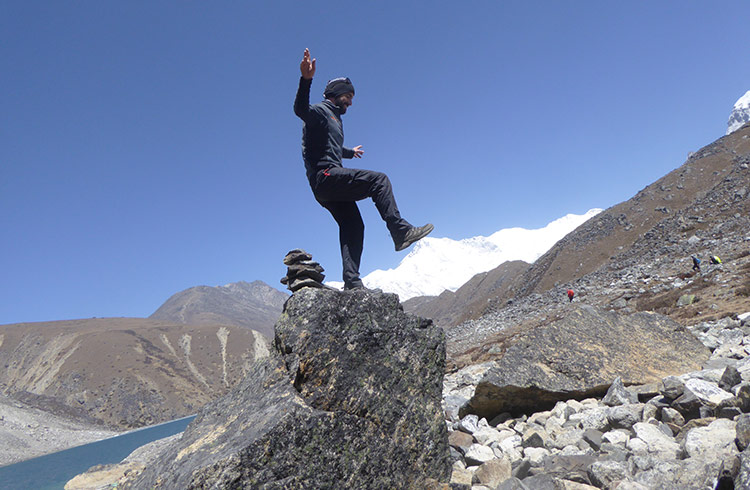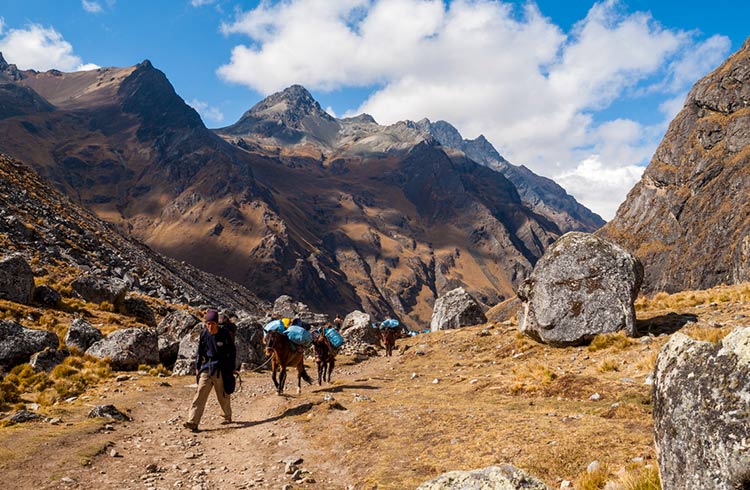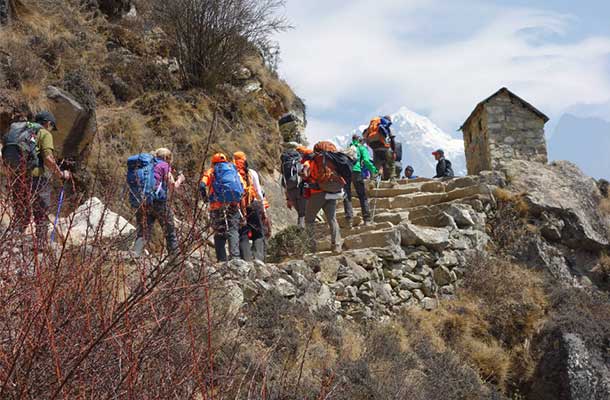How to Handle Altitude Sickness While Trekking in Nepal
Coronavirus (COVID-19) and travel: The situation around the world is changing dramatically. Various governments have changed their travel warnings to restrict travel during this time. To understand how this may impact cover under your policy, please go to our FAQs and select your country of residence.
For the latest travel warnings and alerts around the world, read about lockdowns and border restrictions.
Watch out for altitude sickness above 8,000ft (2,400m) in Nepal. Our safety expert shares his tips on the symptoms of AMS, the importance of slow acclimatization and why you need to stay hydrated.
 Photo © Mark Whitman, Kandoo Adventures
Photo © Mark Whitman, Kandoo Adventures
Acute Mountain Sickness (AMS) is a threat to your health when traveling at high altitudes. Nepal's incredible mountain scenery offers so many hikes, drawing trekkers of all abilities throughout the year to take on multi-day treks, whether it's to Annapurna Base Camp or Everest Base Camp.
But, before you book your trek in Nepal, this is what you need to know about altitude sickness.
What is altitude sickness?
Altitude sickness becomes a major risk above 8,000ft (2,400m). Most people will feel short of breath as they acclimatize, however headaches, vomiting, difficulty sleeping, and the onset of pulmonary oedema or fluid on the lungs are serious symptoms of AMS.
It's very important to acclimatize slowly while trekking in Nepal, and most guides will ensure you sleep at a lower altitude to the maximum reached on the same day.
It is also important not to get dehydrated, and to pace yourself. Go slow from day one of the trek, stick with the group and if you're feeling unwell, take a rest.
Altitude sickness can be fatal, and the onset of pink frothy liquid around your mouth and nose, breathlessness while resting, severe headaches, loss of coordination and vomiting should be treated as AMS, and the best remedy is to descend. Descent is the only treatment for this very serious condition.
Where does altitude sickness occur?
Any trek in the Himalayas – whether it's Nepal, Bhutan, India or Pakistan – is a risk above 8,000ft (2,400m). Many people who land in Cusco, Peru intending to trek the Inca Trail become affected. The Atlas mountains in Morocco are also a risk zone. Kilimanjaro in Tanzania/Kenya is also responsible for a number of cases. Few of the European Alpine resorts are above 8,000ft (2,400m). However many resorts in the USA, mainly Colorado, are closer to 9,840ft (3,000m).
Altitude sickness acclimatization
Don't fly directly to a high altitude destination, stop off somewhere to acclimatize. Inca Trail trekkers should spend a day or two in Cusco (but be warned, it's high altitude anyway). Colorado skiers should acclimatize in Denver. While trekking in Nepal your tour operator will make sure you have appropriate acclimatization before reaching high elevations.
The rule for trekkers is 'climb high, sleep low'. So ascend to a new height during the day, but descend a little to sleep at night. The zig-zag route allows your body to adjust to the low oxygen pressure.
Don't take short cuts – if a guide suggests he can do an 8-day trek in five, it's a sure sign he doesn't follow the 'sleep low' rule. Going straight up all day everyday is a recipe for disaster. If you don't have the time for a lengthy trek, make time, or pick a different trek.
Get a travel insurance quote for Nepal
You can buy at home or while traveling, and claim online from anywhere in the world. With 150+ adventure activities covered and 24/7 emergency assistance.
Related articles
Simple and flexible travel insurance
You can buy at home or while traveling, and claim online from anywhere in the world. With 150+ adventure activities covered and 24/7 emergency assistance.
Get a quote

7 Comments
Dear writer.
This is a beautiful and helpful article for Nepal adventure trekking lover. It helps a lot for trekker to pretend from AMS (Acute Mountain Sickness).
Hop to see more and helpful article about Nepal trekking.
Cheers
You can practice some deep breathing exercises to work up all of your lung's alveoli, prior and during the trek. In fact, It should be an everyday habit to breathe deep and long.
Also, the altitude in Himalaya is far more higher than 2400 meters. The most popular trek, Annapurna Circuit trails touches the altitude of 5400 Meters! Half of this trek is above 2500 meters.
Super article. Thanks
For the Inca Trail you suggest one should acclimatise in the City of Cusco, you should recommend the Sacred Valley which is about 2,000 feet lower than Cusco and closer to the entrance to Machu Picchu.
great write up! thanks
This is really Helpful Article and has a lot of information ,In my experience This Insurance has Quick Service.
I suffered altitude sickness at 2800m in the Annapurna range. For those of you who are unaware here’s what happened:
1. A slight headache at the back of my head came on ever so slowly.
2. I started to lose energy and stop — flat, wondering what was happening. Then I’d carry on after a short rest.
3. At its worst I sat down and had trouble making decisions, in fact I couldn’t be bothered which wasn’t me! I also wanted to doze.
I ignored the first two signs to my own failing. I must warn you that if you start to get a slight headache when you don’t normally get them, TAKE NOTE and DO NOT IGNORE IT!
Luckily for me a homestay was only a short way ahead so an overnight rest and acclimatisation made me better. The next morning I still suffered slight energy loss due to my body playing catch up with oxygen levels. I was 100% the next day but I only went up to 3200m.
I warn others because it was a scary experience especially when I realised afterward just how my cognitive ability was impaired!
Take care folks and trek safe.